 |
|
|||
Objectives The students will be able to identify the availability of natural resources and proximity to water as factors contributing to the selection of Alloway, NJ as the site for the Wistarburgh Glassworks, destined to become the first successful glass factory in North America.
Map from Gentleman’s Magazine, 1776 Vocabulary list Samples of sand, lime, soda ash, salt hay, oyster shells, wood (included in this kit) Letter heading — Caspar Wistar to German glassblowers Copy of sale advertisement from 1780 Examples of Wistar Glass Map of New Jersey Glassmaking Towns Making Connections Every day, in many ways, we make decisions about "where to put things." We make decisions about where to position ourselves, where to put things we’ll need later, where we might want to go and the best way to go. For instance: If you are cold, you might move toward the fire or move by a heat vent… Why? If you are trying to read and there is not enough light, you might move to another seat or sit near a window… Why? If it is supposed to snow, you might put the car in the garage… Why? If you like to go fishing, you would want to have a house near water or to vacation near water… Why? If you want to build a business/store and sell newspapers and coffee, you would look for a busy street or intersection… Why? Having seen the Down Jersey video, several occupations were discussed that happened in the area of the Delaware Bay and Maurice River basin, not by accident, but by design. If your family made their living harvesting oysters, would it make sense to live two hours drive from the bay? If your family made their living farming and you discovered an area that had really good conditions, wouldn’t you farm that area? If you wanted to sell that produce locally, wouldn’t it be good if you set up a stand at a spot where a lot of people passed? In business and in selling land and space, like space in a mall or apartment building, you frequently hear: "Location, Location, Location" or that "Location is everything!" The features and characteristics of an area often influence activities that happen there. You don’t see sledding on the beach or snorkeling in the mountains! Now, let’s go back more than 250 years and meet a gentleman named Caspar Wistar.
Blue Book pages 77–85 Caspar Wistar, an immigrant from Germany, arrived in Philadelphia in September 1717. It had been assumed that he would follow in the footsteps of his father, forester for the Elector of Palatine, but he protested that his "heart was so taken with the new world that I would not be able to stay."1 He arrived in Philadelphia with ambition and not much money, but soon became a successful maker of brass buttons. In 1725, he joined the Quaker faith and married a woman from a successful Quaker family. In general, Philadelphia’s Quakers were a financially ambitious group and Caspar Wistar "fit the profile" so to speak.It isn’t known how Caspar Wistar formed an association with four German glassblowers, calling themselves the United Glass Company, but during 1738, Wistar purchased 2,000-plus acres of land along Alloways Creek, eight miles from Salem, New Jersey, and in September of that year, the four German glassblowers arrived in Philadelphia. By 1739, Wistar, with the skills of his partners, was producing glass in a new factory. Since 1730, Caspar Wistar had been purchasing land in Pennsylvania, some of which he sold to the Penn family. When he purchased the Alloway, NJ tract, he already owned several thousand acres in Pennsylvania including property outside of Philadelphia near an old glassworks. Since he lived in Philadelphia and had a store in the city, it might be assumed that the glass factory was established there. This was not the case. Location was a critical consideration and the purchase of the Alloway, NJ, tract was not coincidental with the arrival of the German glassblowers in the same year. Caspar Wistar was aware of the particular needs of an operating glass enterprise and the location outside of Salem was ideal! Procedure Warm Up Beginning with Caspar Wistar’s factory in 1739, more than 200 glass factories have operated in South Jersey. Wistar must have uncovered a location with some very favorable conditions for glassmaking. His factory continued to make glass for more than forty years. To discover what it was about that area that made it well suited for glassmaking in Wistar’s time and for years to come, we must first know more about glass. The Activity How is glass made? A simple explanation is that glass is made by mixing three dry substances: sand, lime and soda ash (batch), and heating this mixture to 1472 degrees F (800 Celsius), shaping the hot mixture, and then letting it cool slowly. Access to the ingredients needed to make glass would be very important. Pass around the small vials of ingredients included in the teacher’s kit as each is discussed.
Action Does anyone in your family work in a glass factory? Ask if anyone in your family’s past ever worked in a glass factory. Take the opportunity to interview them about their experience to discover which factory, what their task was, what hours they worked, and the types of glass products the factory made. Did they bring any glass home with them? Are there any pieces of glass in the family that have been passed from generation to generation? Look in the phone book to see if a glass factory operates nearby. Often there were related industries that grew in the area of glass plants (factories). Sand mining companies provided sand for the furnaces, trucking companies carried the sand from the pits to the factory, packaging companies made the boxes for the finished glass. Do any of these kinds of businesses appear in the phone book or in your own town?
Assessment We now have a basic understanding of some of the real needs of a glass factory. It is now time to pretend to be Caspar Wistar. Let’s go back to 1738 as Caspar Wistar is seated at his writing desk in his home in Extensions Caspar Wistar’s son Richard owned the glass factory after his father’s death. In 1780, Richard Wistar advertised the factory for sale. From the advertisement, we can develop a mental picture of the lay of the property, with all of the buildings mentioned. Create and draw a map of the property showing the area as described in the advertisement. (See page 78 of Blue Book for advertisement) Please download the PDF for the complete Lesson Plan.
1 Museum of American Glass Exhibit Catalog: "The Wistars and Their Glass 1739–1777," 1993, page 4. 2 An example of the problems that can occur if the raw materials exist at a distance from the factory can be seen in the textile industry during the Civil War. Cotton was grown in the South and factories/mills that turned the raw cotton into fabric were located in the North. During the war, the factories were cut off from their raw materials to the extent that smuggling cotton to the North was attempted. 3 Records relating to the Whitall Tatum Company indicate that this ingredient was imported from England. 4 Museum of American Glass Exhibit Catalog: "The Wistars and Their Glass 1739–1777," 1993. 5 Museum of American Glass Exhibit Catalog: "The Wistars and Their Glass 1739–1777," 1993. Bibliography: American Bottles and Flasks and their Ancestry, McKearin, Helen, and Wilson, Kenneth M., New York: Crown Publishers, Inc. 1978 The Wistars and Their Glass 1739–1777, Palmer, Arlene. Millville, NJ: Museum of American Glass Exhibit Catalog. 1993 A Short History of Glass, Zerwick, Chloe. Corning, NY: The Corning Museum of Glass. 1990 |
|||

 Location, Location, Location…
Location, Location, Location…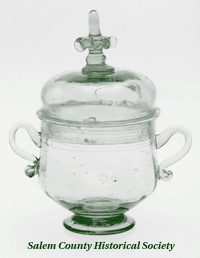 Duration
Duration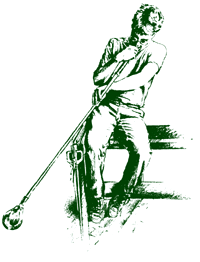 Materials
Materials 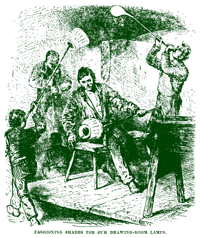 Background
Background 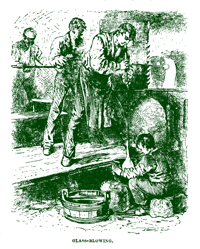 Clean sand for making glass is plentiful in the interior areas of South Jersey. It is a readily available natural resource. Although it looks like beach sand, glass sand is chemically cleaner than beach sand. It makes sense to locate a factory close to the raw materials that are needed. 2
Clean sand for making glass is plentiful in the interior areas of South Jersey. It is a readily available natural resource. Although it looks like beach sand, glass sand is chemically cleaner than beach sand. It makes sense to locate a factory close to the raw materials that are needed. 2
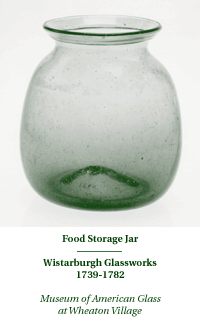 Wrap Up
Wrap Up Philadelphia. Although he already owned property in Pennsylvania, he returned home today having purchased more than 2,000 acres of land in Alloway, New Jersey. Unable to control his excitement, he addresses a letter to the four German gentlemen of the United Glass Company, hoping to win their approval of the Alloways Creek location for the glass factory they hope to build. Wistar (now you) begins to explain all of the benefits of that site. Before you begin the letter, list the ingredients needed for the batch and think about the fuel to melt the batch, and how to transport the finished glass products to the market to be sold. (Remember the items that were passed around.) Describe the area and explain how all of the advantages add up to support construction of a glass factory. Reproduce the blank, stylized letter format included with this lesson.
Philadelphia. Although he already owned property in Pennsylvania, he returned home today having purchased more than 2,000 acres of land in Alloway, New Jersey. Unable to control his excitement, he addresses a letter to the four German gentlemen of the United Glass Company, hoping to win their approval of the Alloways Creek location for the glass factory they hope to build. Wistar (now you) begins to explain all of the benefits of that site. Before you begin the letter, list the ingredients needed for the batch and think about the fuel to melt the batch, and how to transport the finished glass products to the market to be sold. (Remember the items that were passed around.) Describe the area and explain how all of the advantages add up to support construction of a glass factory. Reproduce the blank, stylized letter format included with this lesson.